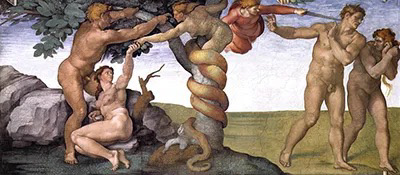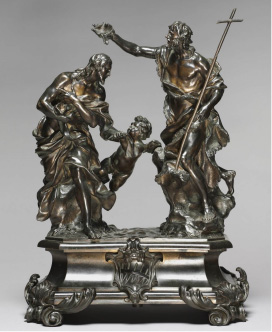“An old silent pond . . .
Into the pond a frog jumps.
Splash! Silence again.”
It is perhaps the best known of all Japanese haiku. (A haiku is an unrhymed poem consisting of 17 syllables arranged in three lines of 5, 7, and 5 syllables respectively.)
No subject could be more humdrum.
No language could be more pedestrian.
Basho, the poet, makes no comment on what he is describing. He implies no meaning, message, or metaphor. He simply invites our attention to no more and no less than just this: the old pond in its watery stillness, the kerplunk of the frog, the gradual return of the stillness.
The poet invites us to stop, look, and listen – to pay attention.
The painter does the same thing, of course.
Rembrandt puts a frame around an old woman’s face. It is seamed with wrinkles.
The upper lip is sunken in, the skin waxy and pale.
It is not a remarkable face.
You would not look twice at the old woman if you found her sitting across the aisle from you on a bus.
But it is a face so remarkably seen that it forces you to see it remarkably, just as Cezanne makes you see a bowl of apples or Andrew Wyeth a muslin curtain blowing in at an open window. It is a face, unlike any other face in all the world.
All the faces in the world are in this one old face.
Literature, painting, music—the most basic lesson that all art teaches us is to stop, look, and listen to life on this planet, including our own lives, as a vastly richer, deeper, more mysterious business than most of the time it ever occurs to us to suspect as we bumble along from day to day on automatic pilot.
In a world that for the most part steers clear of the whole idea of holiness, art is one of the few places left where we can speak to each other of holy things.
I had the good fortune to visit recently the exhibition named “Michelangelo A Different View. Under the license of the Vatican Museums, this exhibit offers the most complete and authentic reproductions of Michelangelo’s magnificent ceiling frescoes.
What struck me most immediately was not the paintings, rather that the room was silent.
In accord with the current Covid rules, there would have been 100 persons inside the exhibit at a time, and no one was speaking.
The majesty of Michelangelo’s craftmanship indeed had people stopping, looking, and listening.
How can you listen to a piece of art you might well ask?
My reply – step outside for a moment and what do you hear?
A bird in a tree, wind through branches, the sea lapping the shoreline, a hammer hitting a nail, a vehicle changing gear as it climbs a hill!
And, if we stop, look, and listen long enough we may well see and hear new sights and sounds.

On the fresco titled “The Fall and Expulsion From Paradise” Michelangelo combines two successive scenes; the Fall is shown on the left half of the picture, and on the right is the expulsion of Adam and Eve from the garden of Eden.
However, when I stopped and looked Michelangelo has Eve taking the fruit of knowledge from the serpent, and has Adam also reaching for fruit from the tree.
Now I am listening!
Look again and the serpent/snake’s upper torso is human!!
Now, I have really stopped and am really looking and endeavouring to stop myself from listening to that small insistent voice inside me saying, “is the tempter inside of you?”
“Oh, go away, don’t be so silly!” So why did I stop, look and listen at that group of paintings the longest?!
Is it too much to say that to stop, look, and listen is also the most basic lesson that the Judeo-Christian tradition teaches us?
Listen to history, is the cry of the ancient prophets of Israel.
Listen to social injustice, says Amos; to head-in-the-sand religiosity, says Jeremiah; to international treacheries and power plays, says Isaiah; because it is precisely through them that God speaks his word of judgment and command.
And when Jesus comes along saying that the greatest command of all is to love God and to love our neighbour, he too is asking us to pay attention. If we are to love God, we must first stop, look, and listen for God.




